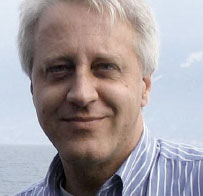Guido Barbujani

Guido Barbujani has worked at the Universities of Padua and Bologna, the State University of New York at Stony Brook, and Queen Mary College, London. He is now professor of Genetics at the University of Ferrara, Italy. His current research focuses on human diversity, molecular evolution, and the DNA of both early humans, and the Etruscan and Nuragic Sardinian Bronze Age populations.
Racial catalogs and human biological diversity.
Humans are different, both at the biological and cultural level. Traditionally, science has taken for granted that human biological diversity could be understood by identifying a small number of distinct clusters, races or subspecies, each comprising a set of biologically similar individuals. However, almost three centuries of attempts to define the number and morphological features of human races has resulted in racial catalogs containing from 2 to 200 entries, each of which is inconsistent with all others.
Modern biological anthropology developed from Frank Livingstone’s intuition that we are very different indeed from each other, but our biodiversity is continuous and distributed in gradients, rather than discontinuous and interrupted by the boundaries that in other species (e.g., the orangutan) reflect the reproductive barriers between subspecies.
The study of the genome has now provided us with a better understanding of human diversity. Roughly one out of 1,000 DNA sites are variable within our species. More than half of this variation is cosmopolitan, with variants present, at different frequencies, in all continents; another significant fraction is specifically African, whereas very few haplotypes appear resticted to Asia, Europe, Oceanias or the Americas. The average human population harbors 85% of the global genetic diversity of the species. Both palaeontological and population-genetics evidence indicate that modern humans originated in Africa, and spread from there at a moment that the best available estimates bracket between 60,000 and 50,000 years ago. The absence of racial boundaries is likely the consequence of the relatively young age of our species, and of the extensive migratory exchanges among populations. This leaves no hope for racial medicine, but a better understanding of our biological diversity may pave the ground for the development of personalized medical treatment.





